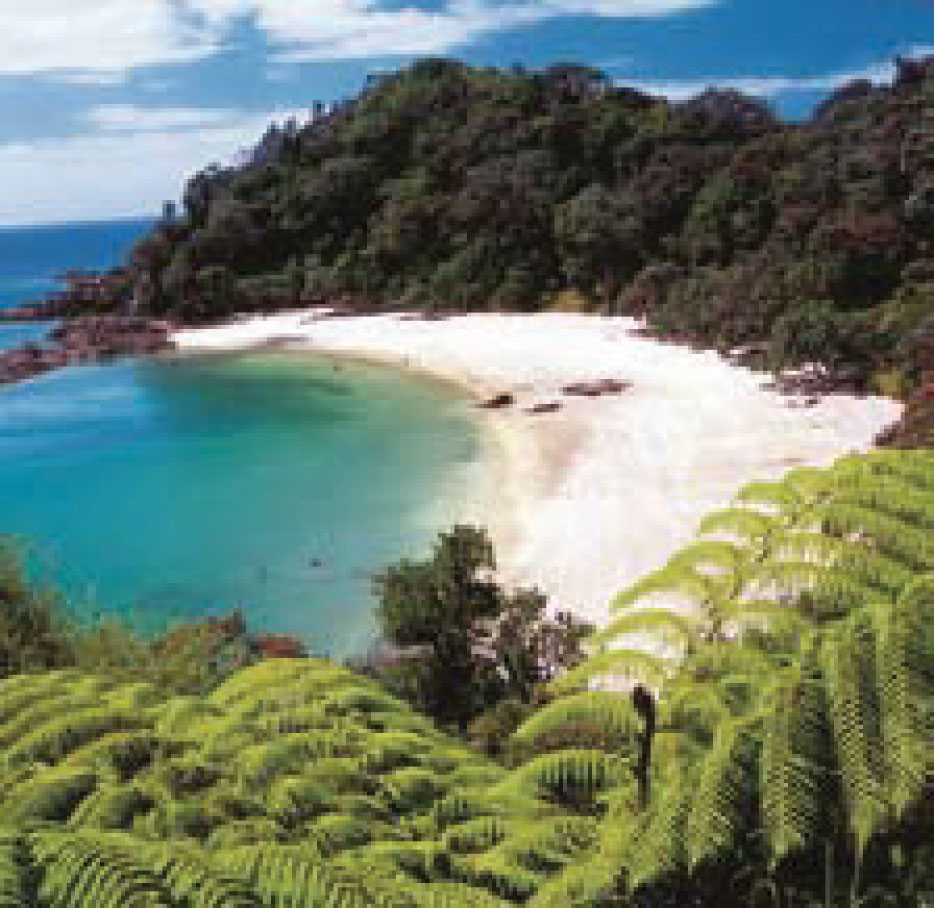It is only two hours’ drive from Auckland but in recent years Whangarei’s housing market has been worlds away from that of New Zealand’s largest city.
While prices soared south of the Brynderwyns, the Whangarei region reported stagnant property values and some of the longest times to sell in the country. Those who moved out of the city often opted to rent out their homes rather than try to sell them in a flat market, effectively stunting rent price growth.
But just lately, all that seems to have changed – and changed dramatically.
Real Estate Institute of New Zealand (REINZ) figures show sales in Whangarei and the wider Northland region have been experiencing steady price increases for some months now. REINZ chief executive Colleen Milne says sales growth continues to be very strong in Northland, with active Auckland buyers and investors. “Inventory data shows that the number of properties available for sale continues to fall quickly in Northland due to the strong demand," she says.
In the three months from June to August this year compared to the same three months in 2014, Northland sales volumes increased by 74%. In the year to the end of August 2015 compared to the same 12 months ending August 2014, Whangarei reported a 6% increase in the median sales price. The number of dwellings sold over this same period increased by 23%, REINZ data showed.
“The increase in the demand for property in the Whangarei region could be due to the influence of Auckland investors and first-home buyers who have been edged out of the Auckland market,” Milne says.
SEA VIEWS SOUGHT
Whangarei Central Professionals owner and manager Valerie Hanger confirms the market is in a better state than she can remember it being for a long time and says good properties are selling quickly across the board. “I’m dealing with a property at the moment that has been available for four days and people are waiting to put offers on it. One hasn’t even seen it. It doesn’t have to be brand new, if it’s in good condition anything under $600,000 is going well,” Hanger says.
She says confidence is returning to the top-end coastal market, which has been depressed for a long time. Increased interest from buyers is evident, with those who seek permanent homes looking to acquire properties with sea views in areas such as Onerahi, close to town, or holiday homes right on the beach further out.
Corelogic's latest statistics show Onerahi’s median price has jumped more than $15,000 this year. Harcourts agent Warren Biddle, who deals primarily in the Whangarei Heads market, says getting listings is a challenge. “There definitely has been an improvement in buyers. It’s just a matter of getting listings to market - but that is starting to happen, with daylight savings and the weather improving.”
Northland Chamber of Commerce chief executive Tony Collins says Whangarei’s population is still growing through migration, primarily from people moving from Auckland. He says places such as Ruakaka and One Tree Point, south of the city, are proving popular with migrants. Corelogic data shows a steady improvement in values in Ruakaka since 2013. It now has a median e-valuer price of $320,000, a big leap from just over $270,000 in 2013. Its median rent has increased from less than $300 in 2011 to around $325 this year.
Northland has a strong dairy farming population but Collins says the outlook is still positive despite the recent dip in milk prices. He says dairy is a cyclical industry.
FUTURE LOOKS SUNNY
It has been predicted that Whangarei is due to get a couple of dry summers due to El Niño weather patterns. And while Collins says farmers could be affected, there would be an equally positive impact on the city’s tourism industry - as sunny, warm weather would entice visitors.
Accountants and business advisers report dealing with growing numbers of people wanting to start new businesses in Whangarei or wishing to take over existing firms. Collins says, “Manufacturing is 20% of our GDP so we are also very strong in that area. Business confidence has remained high and while it is high, people will invest. There are a number of people looking at growing their business and some of that growth will be sustained over the next few years.”
FAMILIES FLOCK NORTH
Those flocking to the north are seeking out larger than average-sized homes.
There is strong demand for four-bedroom homes in Whangarei, with the median sale price for four-bedroom homes up 20% for the three months ending August 2015, compared to the same period in 2014. The number of four-bedroom homes sold over this period has increased also by 107%. Three-bedroom homes have also been popular with a median sale price increase of 8% over the same period and the number of sales increasing by 69%.
“The popularity of four-bedroom homes indicates that families are investing in these houses,” Milne says.
Whangarei is a diverse city with some pockets of expensive houses amid lower socio-economic areas. The most sought-after homes are often in Maunu, near the city’s hospital, or around the picturesque Whangarei Heads. Kensington is a popular spot for families and retirees because of its proximity to supermarkets and schools. Corelogic says it has a median e-valuer price of $310,000 and a median rent of $275.
According to REINZ statistics, the areas within Whangarei with the biggest increase in dwellings sold are: Avenues, Woodhill, Morningside and One Tree Point, which all reported an increase in turnover of 200% or more for the three months ending August 2015 compared to the same three months in 2014.
In Bream Bay, September's figures show a mini boom. House prices are up 4.4% on last month and 26% for the year, with a big increase in turnover.
The biggest development sites in Whangarei at the moment are in Tikipunga, One Tree Point, Ruakaka and smaller, niche gated estates around Maunu. Tikipunga has seen a sharp acceleration in values since last year.
BUILDING THE DREAM
Mark Workman, of building company Pacific Homes Northland, says it has been noticeable that there is activity at all points in the market. He says Aucklanders are considering what they could get for their big city houses and then looking at what the same money would buy further north.
Many found they could buy a house for half the price of their existing home and have it built new, with all the added benefits and guarantees associated with that, he says. His company has 12 homes under construction and 17 still to start. “We’ve never had this [level of activity] in the market. I think it’s because it’s been stagnant for so long.”
SHORTAGE OF RENTALS
Roger Raymond of property management firm i-Rentals, says he is having trouble keeping up with tenant demand. “I just advertised a place in Kamo, had 20 applicants, 10 people booked for a viewing and I rented it two days before the viewing. This week I rented out three homes and we are not the largest [agency] in town.”
He says the warming property market is likely driving a shortage of rental properties. “You only need 10 landlords to sell their investment properties and have them picked up by homeowners before suddenly there’s a shortage. And there are people still moving into Whangarei.”
Better quality rentals around Kamo and the sought-after Hurupaki school zone are in short supply, he says, as are cheaper places that would rent for about $30 a week in areas such as Raumanga. “I’ve had people ringing up for a one-bedroom but we haven’t got any available.”
HIGHER YIELDS
Kamo’s sale prices have recovered a lot over 2015, after a dip in 2011. Department of Building and Housing statistics show a median rent for a three-bedroom house across Whangarei is about $330. Rents are slightly cheaper in Otangarei, which has a strong Housing New Zealand presence.
LJ Hooker Whangarei chief executive Paul Beazley says it is still possible to get a good yield from rental properties in Whangarei. He says he has sold a number of blocks of flats over recent months that all returned between 5.8% and 6.2% yield. “A lot of people are coming north and were struggling to get 2% to 3% in Auckland.”
Hanger says she often sees investors looking at areas such as Hikurangi, which is slightly out of Whangarei to the north and just over 20km to surf beach Sandy Bay. “It is a poorer community but there is a mix of families and retirees.” She says three-bedroom homes in tidy condition are selling for less than $250,000 and would rent for $300,000.
She suggests Raumanga, at the entrance to Whangarei from the south as another area that is often overlooked. “From an investment perspective it’s quite a good area to look at. Houses there sell well below similar homes in areas that are considered better but it has its own shopping centre and is close to town. That’s an area experienced investors are looking at but a lot are forgetting about.”
Corelogic data shows Raumanga’s prices have been volatile over recent years – its median e-valuer price is still slightly down on where it was in 2011. But the number of sales has increased markedly and its median rent has leapt from $280 last year to $320 now.
Workman says the move north is a no-brainer for a lot of people: ‘With Auckland prices people are realising they can sell their home in Glenfield for $800,000 and buy a better bigger brand new home for under $500,000, get the car and the boat and have the lifestyle. Why wouldn’t you want to get out of Auckland?”
Subscribe to NZ Property Investor magazine here to get great stories like this delivered to your mailbox every month.
If you have investment properties in Whangarei, contact our advertisers if you need any of the following things:
New Home Builders
C.J.Gardner Homes
Pacific Homes Ltd
Property Management
Harcourts Just Rentals Whangarei
i-Rentals



![[OPINION] Recessionary times](https://www.goodreturns.co.nz/pics/people/thumbs/300/Gilligan_Matthew_GRA%20New.jpg)

 Search
Search
